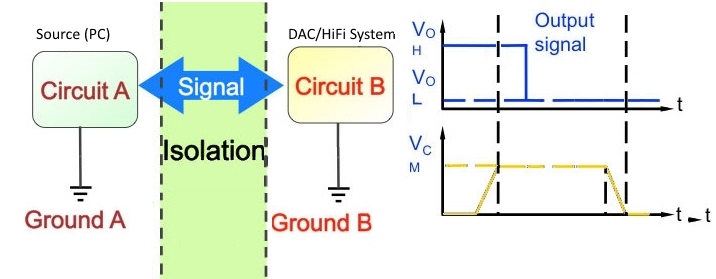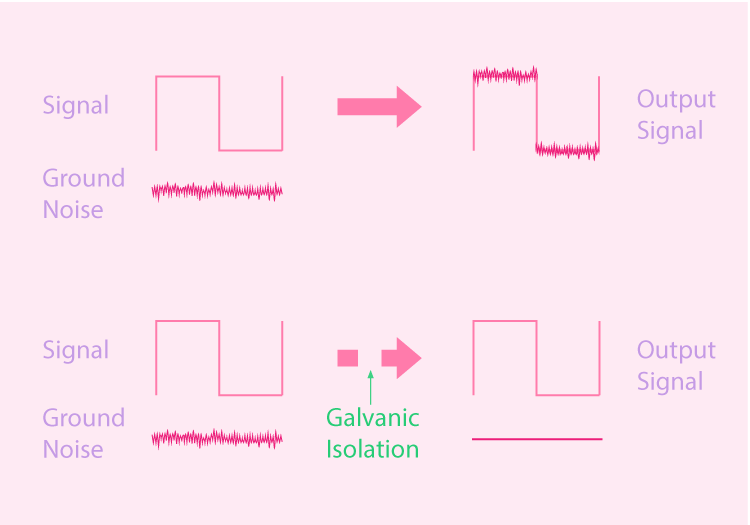Most of you guys already know this, but this is our take on the galvanic isolation in a pill.
Galvanic isolation is a design technique that separates electrical circuits to eliminate stray currents. Signals can pass between galvanically isolated circuits, but stray currents, such as differences in ground potential or currents induced by AC power, RF noise etc. are blocked. In the literal interpretation galvanic isolation means that there is no connection for direct current, meaning a galvanically isolated circuit will measure theoretically infinite resistance, in practice it will be at least 10's of Gigaohm (1GOhm = 1 Million Kiloohm = 1,000,000,000 Ohm) to TeraOhm as even air conducts some electricity.

For USB audio this is a highly desirable feature, as with USB we have not just balanced signals, but also ground (even if the power is cut completely) and via this ground wire ground loops form, even if there is no audible hum. Also high frequency noise can travel along all wired in a USB cable and cause RF problems in downstream equipment, possibly not even the USB DAC itself but amplifiers following it. It is possible to address ground loops by other means. There have also been for many years first generation USB isolators offering galvanic isolation, at the cost of blocking most high resolution audio streams due to speed limitations and negatively impact sound quality due to very high level of jitter.

At least where audible hum is concerned and several of iFi's products offer "ground-loop breakers", ever since our first USB product, the iUSB Power introduced in 2012. However, only galvanic isolation can stop higher frequencies coupling between the computer source (and every streamer out there is also a computer) which is an excellent source of RF noise emissions and the audio system which is often less than excellent in separating such emissions from the signal, causing audible noise or if not directly audible noise, then subjective degradation of sound quality. So it has been a long time goal at iFi (since before 2012) to deliver full High-Rez audio compatible and low jitter galvanic isolation for USB.
Hopefully you'll find it usefull.



























